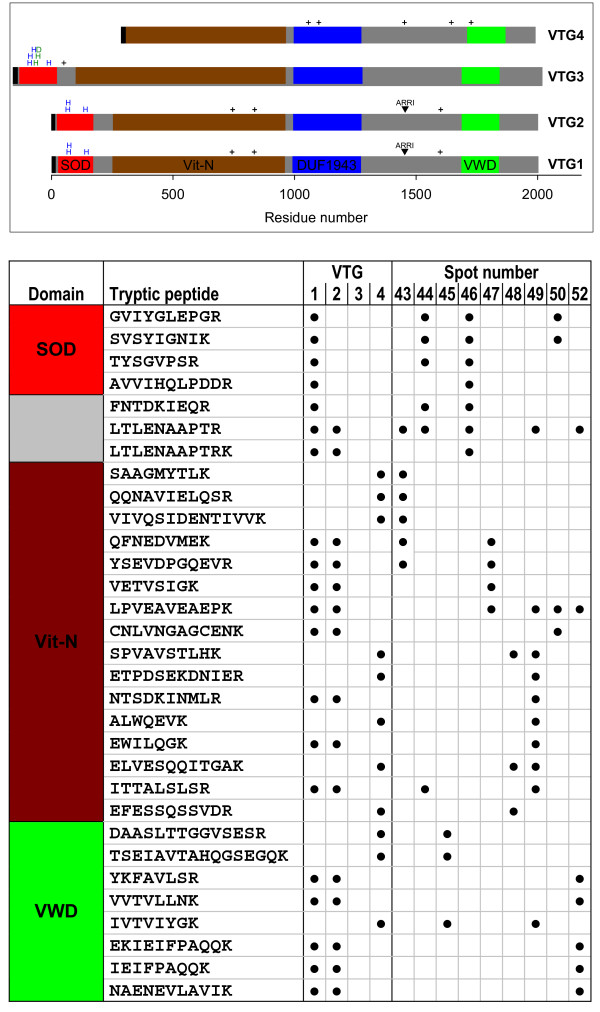Figure 2.
Assignment of protein spots to the vitellogenins of Daphnia pulex. Daphnia vitellogenins (VTGs) are generally composed of an N-terminal large-lipid-transfer-module (Vit-N), a domain of unkown function (DUF1943), and a C-terminal von Willebrand-factor type-D domain (VWD). Of the muliple VTGs of D. pulex, only four are shown in respect to their domain composition (top). Note that VTG1, VTG2 and VTG3 additionally contain a superoxide dismutase-like domain (SOD) at the N-terminus. Interdomain regions are shown in gray, the signal peptide in black. Conserved residues of the SOD for Cu2+ and Zn2+ binding are indicated by blue (histidines) and green characters (histidines, aspartic acid), respectively. Potential N-linked glycosylation sites are indicated by plus signs. 'ARRI' indicates primary cleavage sites between two arginine residues. The lower part lists the tryptic peptides in the order of their appearance in the VTG sequences and in the analyzed spots.

